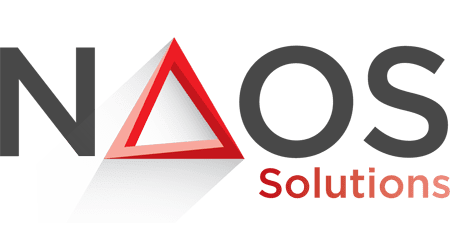Understandably, the idea of handing over customer interactions to an external partner feels risky. What if the quality drops? What if they don’t understand the brand voice? These concerns are valid, but they won’t arise if you take a strategic and gradual approach to outsourcing.

In fact, 58% of business leaders outsourced some aspect of their customer services in 2024, with that number expected to reach 64% by 2025. Customer service outsourcing doesn’t have to be an all-or-nothing last resort. It can actually be a series of scalable, low-risk solutions.
If you’re not ready for full customer service outsourcing either, here’s how you can implement a gradual integration strategy.
WHY GRADUAL CUSTOMER SERVICE OUTSOURCING IS THE SMART MOVE
For customer experience (CX) leaders under pressure to scale service without compromising quality, gradual customer service outsourcing can be the perfect middle path. Instead of committing to a full-scale handover, phased adoption provides the ideal balance of control, clarity, and measurable outcomes.
Let’s look at some of the benefits of gradual outsourcing integration.
Lower Operational Risk
Rolling out outsourcing in stages helps avoid disruptions. You’ll have the capabilities to test specific processes in controlled environments, which means less damage from poor fit or misalignment.
Real-Time Performance Benchmarking
Gradual implementation enables a side-by-side comparison of in-house and outsourced performance. You can compare response times, CSAT, FCR, and resolution quality with clean data before scaling up.
Internal Trust and Buy-In
Significant changes, such as outsourcing customer service, often result in internal resistance. However, when stakeholders see tangible benefits from outsourcing one channel or function, they become a lot more confident. This makes it easier to scale adoption without internal pushback.
Service Continuity and Scalability
Gradual outsourcing maintains business continuity by stress-testing new systems before they are fully integrated, ensuring a smooth transition. It also prepares your company to scale up during seasonal spikes or global expansion without the need to rebuild internally.
STRATEGY 1: START WITH AFTER-HOURS OR WEEKEND COVERAGE
Today’s customers expect 24/7 availability, with 50% of customer inquiries occurring outside standard business hours. However, many businesses simply can’t staff full-time support without burning out internal teams or increasing overhead costs. That’s where outsourcing night and weekend shifts comes in.

It’s a low-risk move that doesn’t interfere with core daytime operations but also relieves pressure on internal teams. This approach is ideal for e-commerce businesses that handle late-night orders, cancellations, and refund queries, as well as SaaS providers serving international or always-on user bases.
The operational benefits are clear:
- Speed to implementation: Most BPOs can onboard agents for off-hours shifts within weeks, not months.
- Minimal disruption: No changes to core workflows, team structures, or internal leadership dynamics.
- Visible performance gains: Faster response times and higher CSAT scores from previously underserved time blocks
Most importantly, after-hours coverage is the cleanest testing environment. You can benchmark KPIs such as FCR, CSAT, and AHT against daytime performance to validate vendor quality without impacting peak-hour operations.
STRATEGY 2: OUTSOURCE A SINGLE CHANNEL (LIVE CHAT, EMAIL, OR SOCIAL MEDIA)
If after-hours coverage isn’t the right starting point, consider outsourcing a single customer service channel. This way, you can safely evaluate your outsourcing partner’s quality, consistency, and adherence to processes.
Most CX leaders start with live chat, email, or social media because they’re easy to segment, track, and optimize.
Live Chat
This is Ideal for businesses with high-volume, real-time inquiries.

Live chat is often the busiest yet most under-optimized support channel. As of 2025, 41% of customers prefer live chat as their real-time customer service channel over phone and email support. Outsourcing here enables faster response times, broader coverage, and enhanced conversion support during peak traffic hours.
For more complex queries or lower volumes, email is also a good choice. It remains the preferred support channel for 77% of B2B customers.

Additionally, it enables clear documentation, built-in quality control, and asynchronous flexibility. It’s also easier to scale with part-time agents or off-site teams. Companies that use outsourced email support report a 52% faster resolution of customer tickets compared to in-house handling.
Social Media
Social media customer service can be highly reactive and emotionally charged. As of 2025, 50% of consumers expect a response from brands on social media within 5 hours. Meanwhile, 39–43% expect a reply within 3 hours, and 12–14% expect it within just 30 minutes.
Another study specifies that around 40–42% of customers expect brands to respond within one hour of their social media inquiry. Outsourcing this aspect allows you to monitor brand mentions, respond more quickly to complaints, and build customer loyalty without overwhelming your internal team.
STRATEGY 3: CHOOSE A SPECIFIC USE CASE OR REGION
Another effective way to ease into customer service outsourcing is by isolating a specific use case or geographic region. You’ll be able to test your partner’s capabilities within a clearly defined scope. For example, you might start by outsourcing:
- Returns and refunds processing for e-commerce
- Onboarding support for a SaaS product
- Tier-1 technical queries for hardware
- Localized support for a non-core market (e.g., DACH, Nordics, or APAC)

This doesn’t just create an isolated test environment with minimal impact on broader CX operations, but also makes it easier to track resolution time, CSAT, and escalation rate. You’ll gather actionable insights about vendor quality, process fit, and customer satisfaction across a contained scope.
This strategy is great for businesses expanding globally or struggling to support niche workflows in-house. Outsourcing localized support for a specific market will also provide you with language fluency, cultural relevance, and time-zone coverage, without the need to hire regionally. Shopify research has found that localized personalization leads to 20% higher customer satisfaction.
It also creates clear baselines: when you know how your internal team performs in Market A, and how your partner performs in Market B, you gain the data you need to make informed scaling decisions.
STRATEGY 4: START BEHIND THE SCENES WITH BACK OFFICE SUPPORT
If you’re hesitant to outsource any customer-facing interaction, you can also start with back-office support. This low-visibility area lets you test vendor capability without risking your brand voice or frontline service quality.
Back-office tasks, such as order verification, data entry, inventory updates, billing adjustments, and refund processing, are critical to ensuring customer satisfaction. However, they don’t require direct communication, which makes them ideal for first-stage outsourcing.
Benefits of outsourcing back office support include:
- Lower emotional stakes: Since agents aren’t speaking directly with customers, the risk of tone or branding misalignment is minimized.
- Easier onboarding: These tasks are often rule-based, making them more straightforward to document, train, and partially automate as needed.
- Internal confidence-building: You gain a clear understanding of how your partner handles security, compliance, turnaround times, and process efficiency before expanding into customer-facing roles.
It’s also an excellent testing ground for system integration and data handling protocols. You’ll see how well the vendor integrates into your workflows, adheres to SLAs, and adapts to change. By the time you’re ready to outsource customer support, both sides will already have a working rhythm.
PITFALLS TO AVOID WHEN STARTING SMALL
Gradual customer service outsourcing can be a great solution if it’s done right. Many CX teams make certain errors early in the integration process that can hinder the long-term success of their outsourcing strategy. Here are some pitfalls you should watch out for:
Don’t Choose a Partner Based Only on Price
Low rates can look tempting, especially when testing a single channel or use case. However, cheap outsourcing often comes with hidden costs: poor quality, high turnover, and frequent escalations. Instead, look for partners with proven CX experience, industry-specific expertise, and a transparent support model.
Don’t Skip Onboarding or Training
Even for small pilots, your vendor needs proper training on your brand voice, systems, workflows, and policies. Rushed or nonexistent onboarding leads to inconsistent service and frustrated customers. Harvard says that the first 45 days of onboarding account for up to 20% of employee turnover.
Don’t Set Unclear Success Metrics
Without KPIs like CSAT, AHT, or resolution rate, it is impossible to measure progress or justify expansion. Ensure that both your team and your partner are aligned on what success looks like, how it’s tracked, and how it’s reported.

Don’t Expect Instant Cultural Alignment
Every team has its own tone, pace, and problem-solving style. If you expect perfect alignment right off the bat, you’re setting yourself up for frustration. Give your partner time and clear guidance to match your brand voice and customer expectations.
Experts agree that outsourced teams typically require at least three months of comprehensive onboarding to begin delivering consistent, brand-aligned support. This includes comprehensive brand training, in-depth product knowledge, immersion in tone and messaging, and customer service outsourcing protocols.
CONCLUSION – START SMART, GROW STRATEGICALLY
If you’re not ready to take a high-risk leap just to scale your customer service operations, gradual outsourcing is the right solution for you. You can choose to hand off after-hours shifts, a single channel, or a specific function. Either way, this approach gives you more control, flexibility, and data.
At the same time, you’ll be protecting your core operations and building internal buy-in. As long as you choose the right partner, gradual integration is your safest bet at outsourcing. That’s where NAOS Solutions comes in.
Contact NAOS Solutions today to transform your customer support without giving up control.

